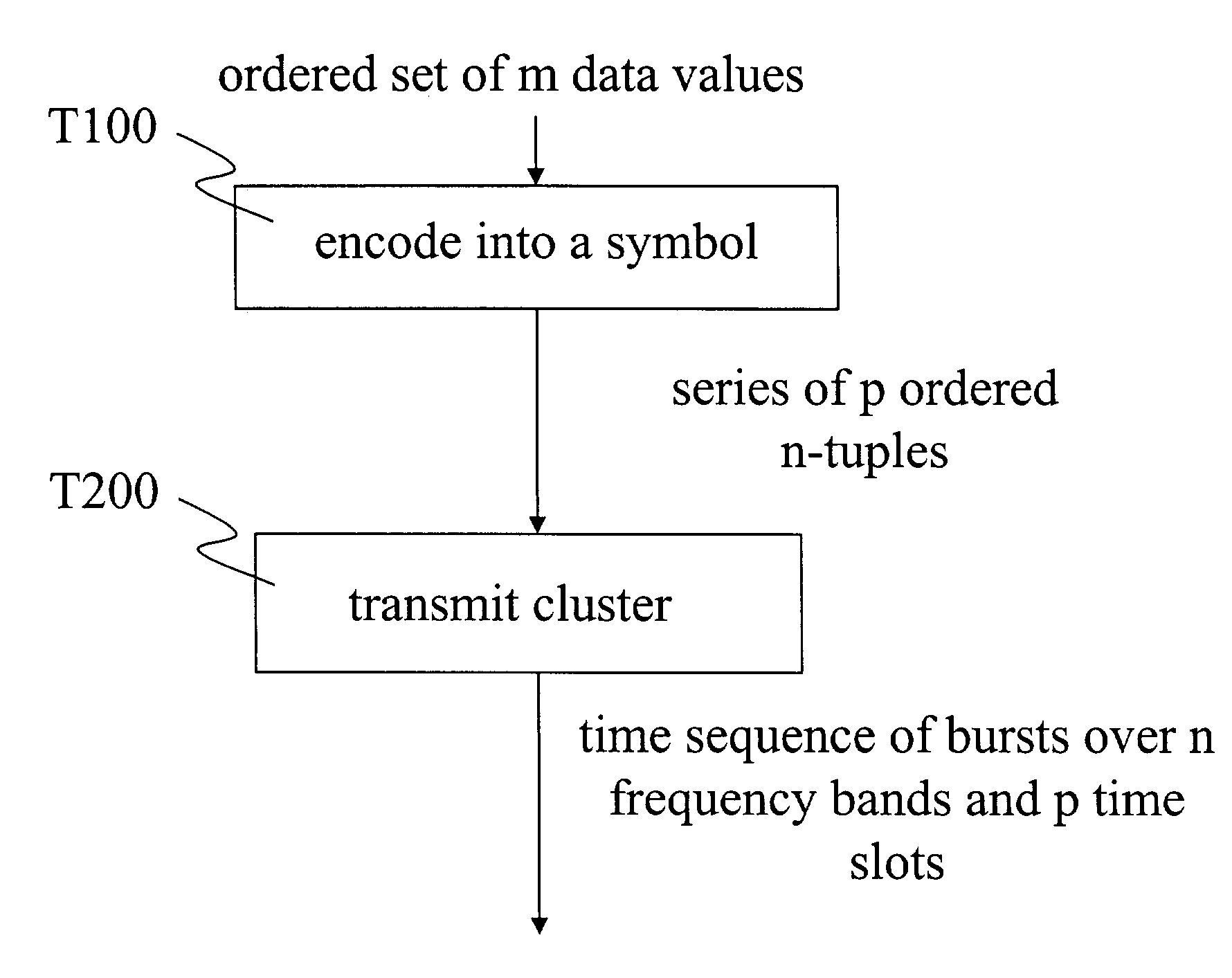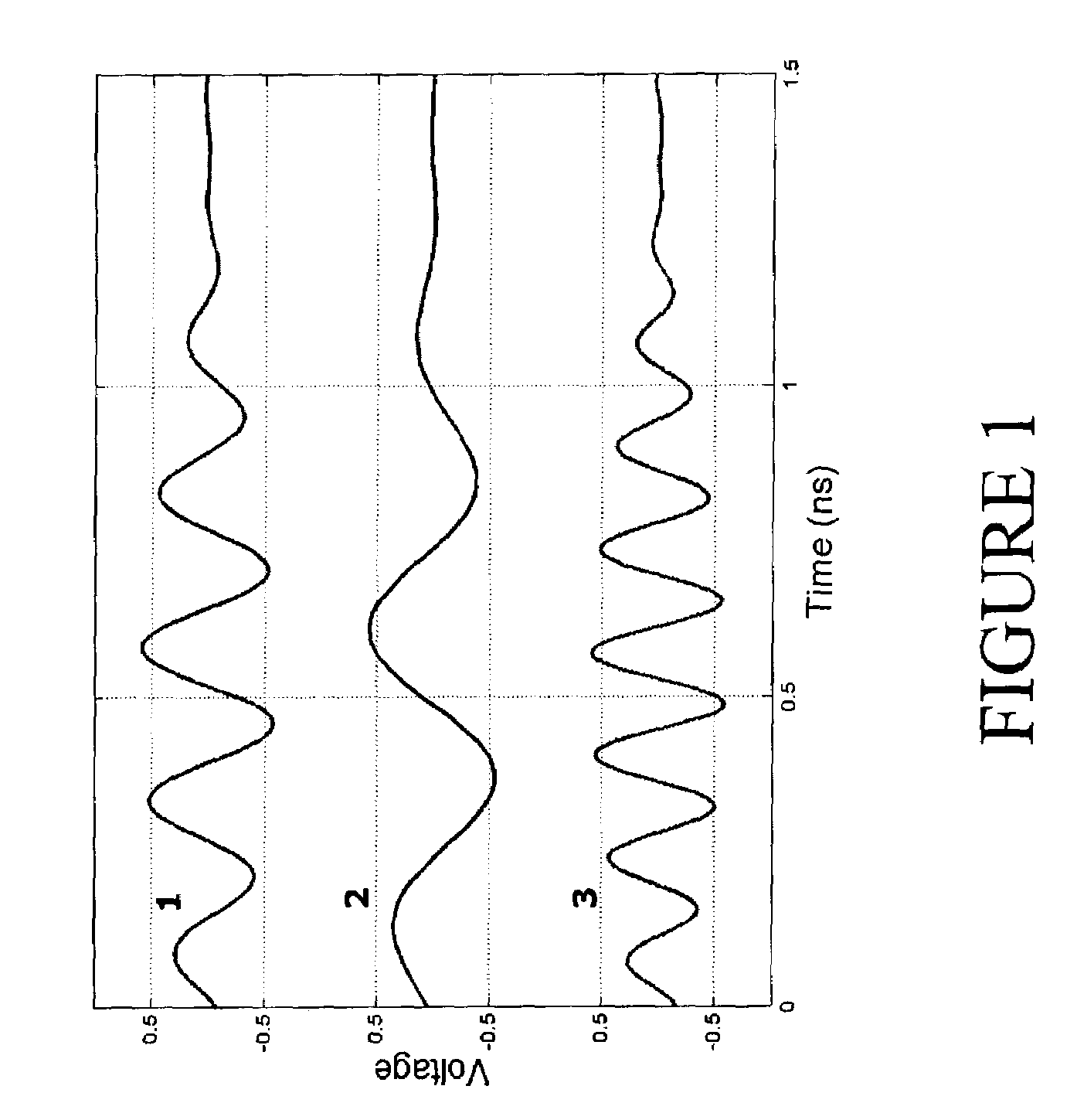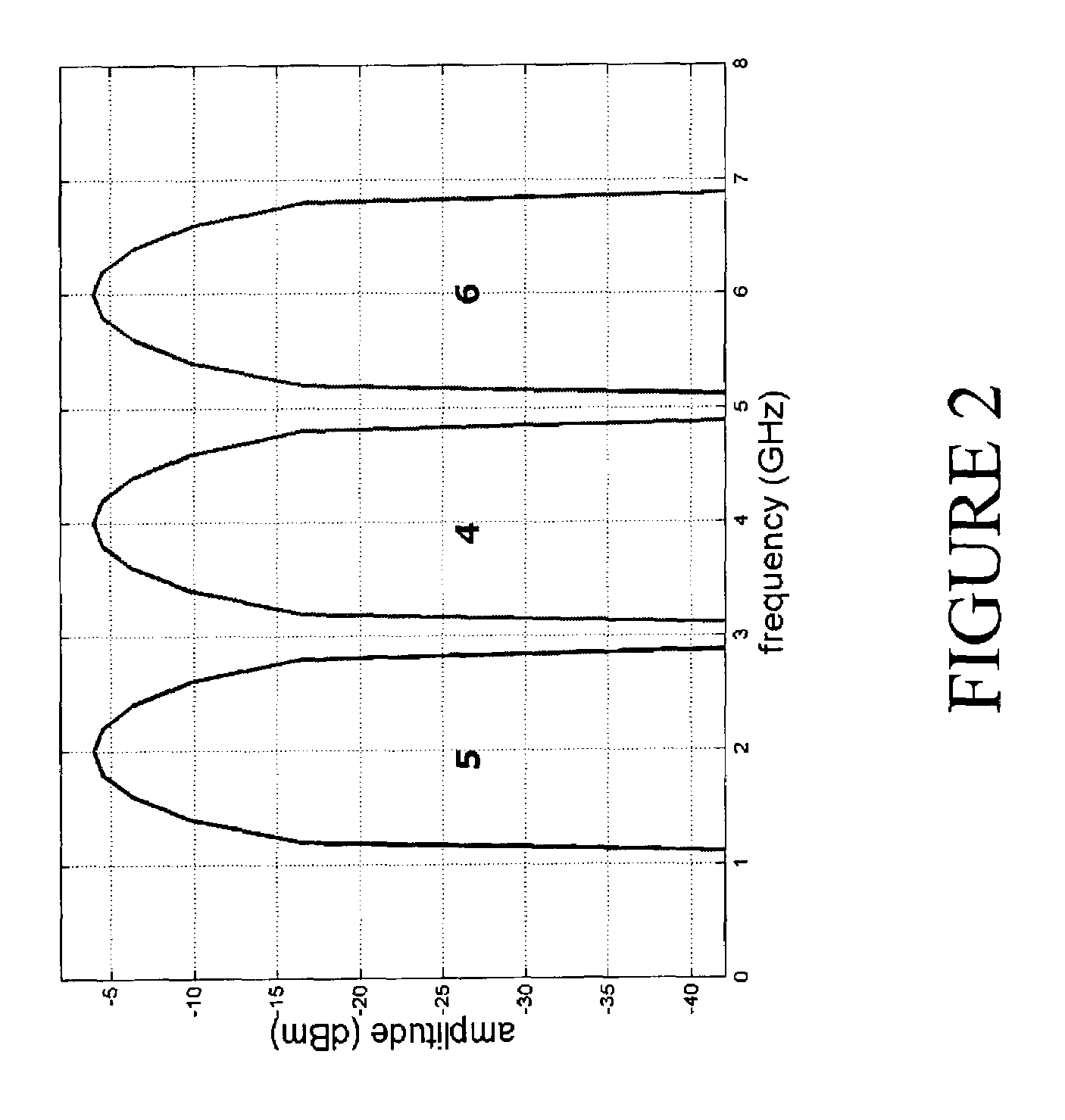Method and apparatus for data transfer using a time division multiple frequency scheme supplemented with polarity modulation
- Summary
- Abstract
- Description
- Claims
- Application Information
AI Technical Summary
Problems solved by technology
Method used
Image
Examples
Embodiment Construction
[0109]In the description and claims that follow, certain terms may be defined as follows:
[0110]The term ‘frequency band’ denotes a portion of the frequency spectrum. The term ‘center frequency’ as applied to a frequency band denotes a frequency at the arithmetic mean of the frequencies of the boundaries of the frequency band. As defined herein, frequency bands may be adjacent to one another but are distinct from one another and do not overlap.
[0111]The term ‘burst’ denotes the emission of an amount of energy within a particular range of frequencies and over a limited period of time. A burst may include one or more cycles of a waveform (e.g. a sine wave). A burst may even be limited to less than one cycle of a waveform. In some applications, two or more bursts may be transmitted simultaneously. Beginning the transmission of a burst is also referred to as ‘triggering’ the burst. Transferring a burst from the generating circuitry (e.g. as described herein) to the transmission medium or...
PUM
 Login to View More
Login to View More Abstract
Description
Claims
Application Information
 Login to View More
Login to View More - R&D
- Intellectual Property
- Life Sciences
- Materials
- Tech Scout
- Unparalleled Data Quality
- Higher Quality Content
- 60% Fewer Hallucinations
Browse by: Latest US Patents, China's latest patents, Technical Efficacy Thesaurus, Application Domain, Technology Topic, Popular Technical Reports.
© 2025 PatSnap. All rights reserved.Legal|Privacy policy|Modern Slavery Act Transparency Statement|Sitemap|About US| Contact US: help@patsnap.com



